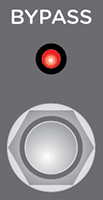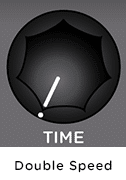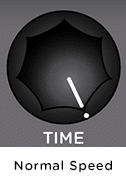
Artist Feature: Sound on Sound with El Capistan
A few weeks back Hugo did a blog on Sound on Sound with El Capistan. I thought it would be fun for this Artist Feature
Free US Shipping On Orders Over $49
Easy 30-Day Returns
Financing Available Through ![]()
 Welcome to the first installment of our new Strymon Gear Guide series! I will be providing tips and tricks on using and understanding the various features of our Strymon pedals on a monthly basis. Hopefully I can help shed some light on any questions you may have about using our gear and harness the full potential from our pedals. Feel free to let me know what else you might want to learn about our pedals in future posts in the comments or by emailing [email protected].
Welcome to the first installment of our new Strymon Gear Guide series! I will be providing tips and tricks on using and understanding the various features of our Strymon pedals on a monthly basis. Hopefully I can help shed some light on any questions you may have about using our gear and harness the full potential from our pedals. Feel free to let me know what else you might want to learn about our pedals in future posts in the comments or by emailing [email protected].
For my first article, I’m going to cover the usage of El Capistan‘s Sound on Sound feature.
El Capistan’s Sound on Sound mode can be used to create loops of up to 20 seconds in length using a recreation of a sliding head style mechanical tape loop system.
To set El Capistan to Sound on Sound mode, set the TAPE HEAD switch to Single and the MODE switch to C. Whatever you have recorded in modes A or B will still exist in mode C.


When El Capistan is set to Sound on Sound mode, recording is ALWAYS active when the pedal is engaged (BYPASS light is on).
There are 2 tape speeds available when adjusting the TIME knob:
Double Speed (10 sec. recording time) with the knob left of 12 o’clock
Normal Speed (20 sec. recording time) with the TIME knob to the right of 12 o’clock.


Once you engage the pedal by hitting the BYPASS switch while in Sound on Sound mode, press the TAP switch at the same time you start playing to set the ‘In’ splice, then, press the TAP switch again at the end of playing your loop to set the ‘out’ splice and immediately start playing back from the IN splice.
At this point, El Capistan will be looping everything you played between the IN and OUT splice points. Keep in mind that it will still be recording, so anything you play will also be recorded an layered on top of the original loop. The Repeats knob controls how many times the loop will play back. Turn up the Repeats knob to 100% for the loop to play continuously with the fidelity of the recording diminishing over time.
Hitting the BYPASS button will cut the audio of the recorded loop, but it will continue to play as if the tape is still rolling with a mute button pressed. Hitting the BYPASS button again will return the audio from recorded loop.
If you want the recorded loop to continue playing back without adding any additional layers of recording, you would need to hit the BYPASS button to stop recording as the loop is playing back. Please note that the bypass mode of El Capistan would need to be in Trails mode. To change between True Bypass and Trails modes, you just need to press down and hold the BYPASS button as you plug in the power supply to power up El Capistan. Check out the following video showing you how to change the Bypass mode of the El Capistan:
Finally, to clear the splice points and recordings, a third press of the TAP footswitch while the BYPASS light is on will perform a bulk erase of the tape so you can record a new loop.
Check out the blog post below.
Subscribe to our newsletter to be the first to hear about new Strymon products, artist features, and behind the scenes content!

A few weeks back Hugo did a blog on Sound on Sound with El Capistan. I thought it would be fun for this Artist Feature

What do you get when you combine Strymon gear, synths and some creative minds? Check out some artists we have enjoyed recently with their mad

If you have an El Capistan on your pedalboard, you’ve probably spent some time having fun with the Sound on Sound mode. This mode is
10 Responses
I’m having issues with using the sound on sound as a present. It doesn’t continue recording. I know it will if you manually flip the switch, but won’t when usingtthe favorite switch. Is this normal, an oversight or am I just not using it correctly? Thanks!
@A captain for the stars – The Sound on Sound feature of the El Capistan will also work while set as a Favorite preset. The recording works the same and the Onboard TAP switch must still be used to control the splice features. If you still have trouble with this, please write us at [email protected].
There is no possibility of switching to the secondary functions of the knobs when in Sound-on-Sound mode without bulk erasing the loop, isn’t it?
Hi Philipp. The secondary functions weren’t designed to be real time loop controls in Sound on Sound mode. However they can be accessed without erasing the loop as long as you’re careful to press down both footswitches at exactly the same time. 🙂
Not a question about sound one sound or looping, but might as well as here regardless: I have my primary sound set as a light, slightly dark & subtle “wash style” tape delay, and my secondary (or Tap Favorite”) sound as a nice, strong reverb. I’ve written down the settings, but before I start more tweaking, I’d like to know if changing a setting in the “Favorite” sound (the reverb, in my case) will only apply to that setting, or will the Favorite sound take on all the characteristic of the way the pedal is manually set at the time? Just for example: if I want to turn down just the mix on my reverb “Favorite” setting when Favorite mode is active, will only the mix of my Favorite sound be affected when I re-save it . . . or will it default back to all the “non-Favorite” settings that are visible at the time? I guess . . . in other words . . . does the Favorite Mode remember all its settings, and only adjust the ones you physically change or modify?
@Sudsy100 – If you adjust a setting in a FAVORITE preset such as REVERB MIX, all of the other parameters on the pedal will remain intact as long as you do not adjust those other parameters. This way, you can make an adjustment to the preset and re-save that FAVORITE setting with all of the other parameters intact.
Thanks, Hugo! I thought that was the case, but you know how it is when you have things “just like you like ’em.” I could have easily just turned a knob, saved the Favorite and found out. But now that you’ve helped, I know only the specific parameter I adjust will be changed. Now I can tweak to the heart’s content. Cheers!
For you youngsters inexperienced with tape echo, tape recorders, cassette players, etc., this play-on-words refers to the “capstan” on an analog tape machine. The capstan is a rotating spindle, driven by an electric motor. The tape is threaded between the capstan and a wheel of rubber or other sticky or tacky material (sometimes referred to as a pinch roller) that is pressed against the capstan to provide the friction required to pull the tape across the tape head(s).
Hi! I haven’t been able to use the sound on sound looper; even after going into single tape head/mode C, the pedal keeps acting as a regular delay (so max repeat only means horrible, horrible feedback). The tap display led also acts as the delay mode. Help 🙁
Hi, please email [email protected] and we’d be happy to help!